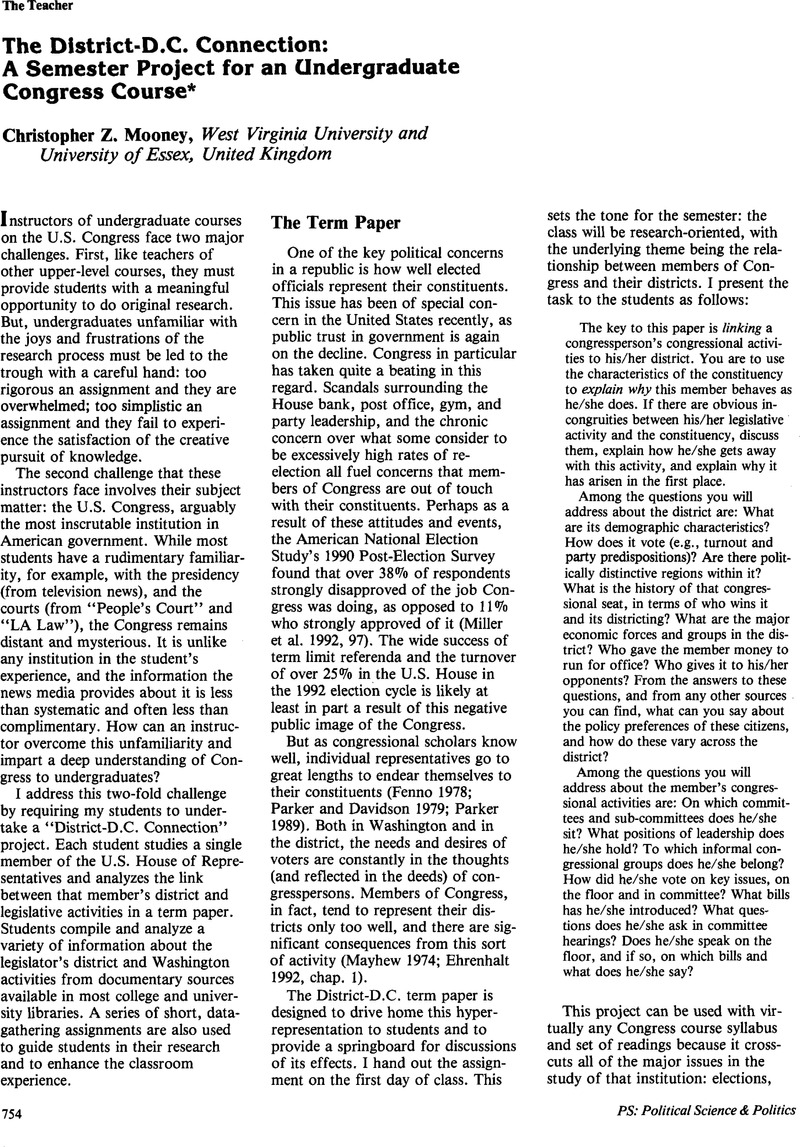No CrossRef data available.
Article contents
The District-D.C. Connection: A Semester Project for an Undergraduate Congress Course
Published online by Cambridge University Press: 02 September 2013
Abstract
An abstract is not available for this content so a preview has been provided. As you have access to this content, a full PDF is available via the ‘Save PDF’ action button.

- Type
- News
- Information
- Copyright
- Copyright © The American Political Science Association 1993
References
Birnbaum, Jeffrey H., and Murray, Alan S.
1987. Showdown at Gucci Gulch. New York: Random House.CrossRefGoogle Scholar
Ehrenhalt, Alan. 1992. The United States of Ambition: Politicians, Power, and the Pursuit of Office. New York: Times Books.Google Scholar
Fenno, Richard F.
1978. Home Style: House Members in Their Districts. Boston: Little, Brown.Google Scholar
Mayhew, David R.
1974. Congress: The Electoral Connection. New Haven, CT: Yale University Press.Google Scholar
Miller, Warren E., Kinder, Donald R., Rosenstone, Steven J., and the National Election Studies. 1992. American National Election Study, 1990: Post-Election Survey. Ann Arbor, MI: Inter-university Consortium for Political and Social Research.Google Scholar
Parker, Glenn R.
1989. “Members of Congress and Their Constituents: The Home-Style Connection.” In Congress Reconsidered, 4th ed., ed. Dodd, Lawrence C. and Oppenheimer, Bruce I.. Washington, DC: CQ Press.Google Scholar
Parker, Glenn R., and Davidson, Roger H.. 1979. “Why Do Americans Love Their Congressmen So Much More Than Their Congress?” Legislative Studies Quarterly
4:52–61.CrossRefGoogle Scholar




